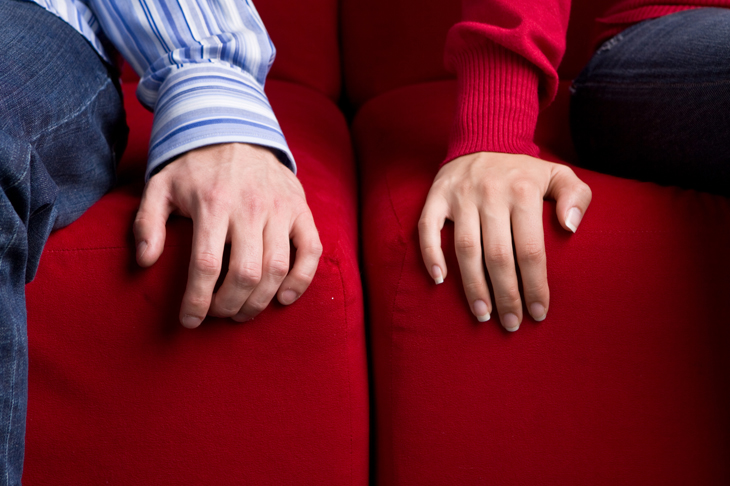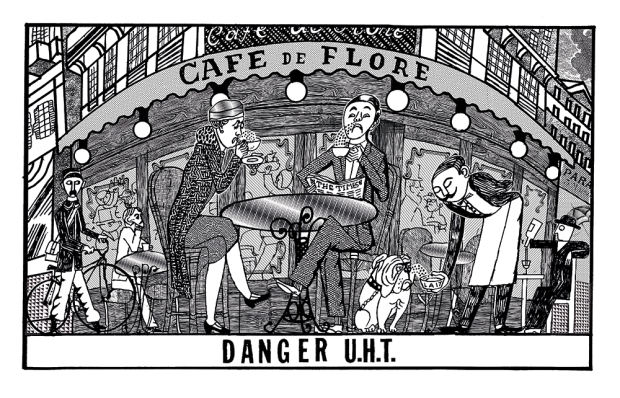It is hard to think of a code of behaviour which is common to all societies on earth, let alone to most other species too — except, that is, for the avoidance of incest. Even cockroaches have developed a breeding strategy that prevents them mating with their own siblings. And yet as we understand more about the genetic dangers of inbreeding, so the social infrastructure that guards against it is being dismantled.
In the 40 years since the birth of Louise Brown, the world’s first test tube baby, births by IVF have become routine — almost 2,500 a year using donated eggs, sperm or both. And yet there is virtually no guard against the children growing up and accidentally breeding with half-brothers and sisters of whose existence they are unaware.
The failure to develop such safeguards is serious because the risks of genetic abnormalities from incestuous conceptions are so high. In 1971 the Czechoslovakian Academy of Sciences studied 141 children born in such relationships and found that more than half had some kind of health problem, while 42 per cent had severe birth defects and 11 per cent were mentally impaired.
There has always been a risk of brothers and sisters beginning relationships unaware that they are siblings — or more likely half-siblings. Children born as the result of affairs may have no inkling of who their real father is. A geneticist who works in a west London hospital told me that in as many as one in ten cases of children investigated for various reasons there is no genetic match between the child and the man who thinks he is the father.
But that is a risk which is hard for government to guard against. The increasing number of children who are conceived with donor eggs or donor sperm — an activity that is regulated by the state — is quite another matter. Some sperm donors are remarkably prolific: it recently emerged that there are 17 men who have each fathered at least 30 children via donating their sperm and a further 104 with between 20 and 29 children.
There is a limit in Britain: sperm donors are supposed to donate sperm to a maximum of ten families. There is, however, no limit on the number of children in each family — hence the number of men having absurdly large numbers of offspring. Nor is it clear how well the rules are enforced — a campaign group, Comment on Reproductive Ethics, once claimed to have come across the case of a man who had helped 17 different families conceive. Some sperm donors claim even greater tallies: one, Simon Watson, claims to have fathered 800 children by selling his ‘magic potion’ via his website.
Many children conceived with donor eggs and sperm will not even be aware of that fact; it is down to the parents who bring them up whether to tell them or not. The law has been changed to give children, on reaching the age of 18, the right to find out the identity of a sperm or egg donor — so in five years’ time, information that may allow such children to avoid stumbling into an incestuous relationship. But the information will not be given to them as a matter of course and there will be no obligation on them to seek it.
The odds of accidental incest might seem at first to be reassuringly small. Take those 17 men who have each produced at least 30 children, and assume they were born within ten years of each other. The risk of entering into an incestuous relationship will be about one in 266,000. Given the sheer number of children being born with donor sperm, however, the chances grow. Take a man who has fathered 30 children. The risk of at least one of his children entering into an incestuous relationship rises to one in 18,000. The risk that at least one of those 17 sperm donors will father children who go on to have an incestuous relationship rises to one in 1,060.
This assumes that use of donor sperm is widely dispersed about the country and that relationships are random. Neither of these is the case. Donors tend to be matched physically with the people to whom they are donating — with the result that it is more likely to be used in the same community and same part of the country where it is donated. As for the randomness of relationships, there is a phenomenon known as genetic sexual attraction. In most cases children who are brought up together as young children in close physical proximity do not experience attraction to each other later in adulthood. It is a phenomenon known as the Westermarck effect, and has been found to apply not just to siblings but to unrelated children brought up in communal environments such as a kibbutz. Yet where siblings are brought up apart and meet first as adults, they do not experience any Westermarck effect. On the contrary, they have been found to be especially likely to find each other sexually attractive.
One of the best-known cases is a German couple, Patrick Stübing and Susan Karolewski, siblings who were adopted by different families and who did not meet until he was 24 and she 16. They went on to have four children — two of whom are reported to have disabilities — in spite of their family life being interrupted by several jail sentences served by Stübing for incest.
The Stübing case forced the German liberal establishment, in the form of the national ethics council, to address the issue of incest. But when this body met in 2008, 14 members voted for the law against incest to be repealed with nine saying it should remain and two abstentions. The reasoning of those who voted for repeal is fascinating: they argued that there was no law against non-siblings with genetic abnormalities from getting married and having children. So it is, therefore, discriminatory to ban siblings from doing so, even if it does carry a huge risk of hereditary disease. In other words, they sought to reduce the matter — like so much else now — to one of equality.
This perhaps explains the reluctance of British authorities even to consider the risk of accidental incest through donor sperm and eggs. No government has been brave enough to interfere with a process that allows single women and same-sex couples to bear children (one of whom, in the latter case, is the natural parent).
Britain is not as bad as the US where there is no limit on the number of children or families whom a single sperm donor can conceive. There, according to the Donor Sibling Register, which helps people trace their siblings, sperm donors have been shocked to discover that they have fathered more than 200 children. There have also been cases of clinics openly abetting incestuous conception. In 2001 the journal Reproductive BioMedicine documented the case of two women who had deliberately been impregnated with their brothers’ sperm. One was in a lesbian relationship. The other had done it simply to deny distant relatives an inheritance.
There is no reason why the risk of accidental incest should not be addressed without banning or unreasonably restricting IVF. At the very least why not limit sperm and egg donors to donating to a single family — and preferably draw them from people who do not have their own children? Maybe all couples who are thinking of getting married or preparing to conceive children should be offered a simple genetic test to rule out accidental incest as well as other bad genetic matches.
Huge resources are going into understanding hereditary diseases. It is bizarre that we have simultaneously lowered the guard against accidental but avoidable incestuous relationships. We are moving from a society in which the taboo is not so much incest but daring to questioning the risk of it.
Got something to add? Join the discussion and comment below.
Get 10 issues for just $10
Subscribe to The Spectator Australia today for the next 10 magazine issues, plus full online access, for just $10.
You might disagree with half of it, but you’ll enjoy reading all of it. Try your first month for free, then just $2 a week for the remainder of your first year.















Comments
Don't miss out
Join the conversation with other Spectator Australia readers. Subscribe to leave a comment.
SUBSCRIBEAlready a subscriber? Log in